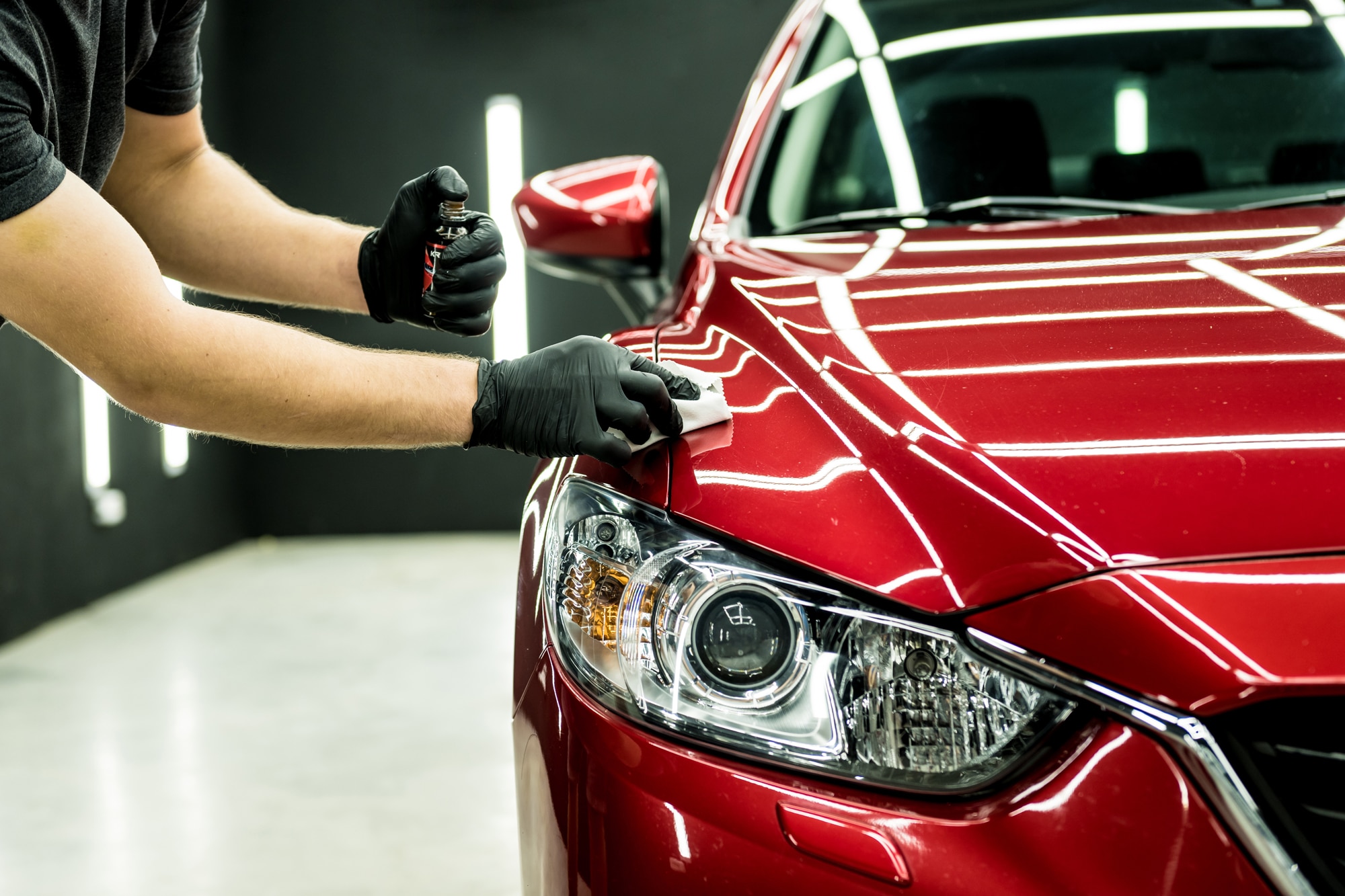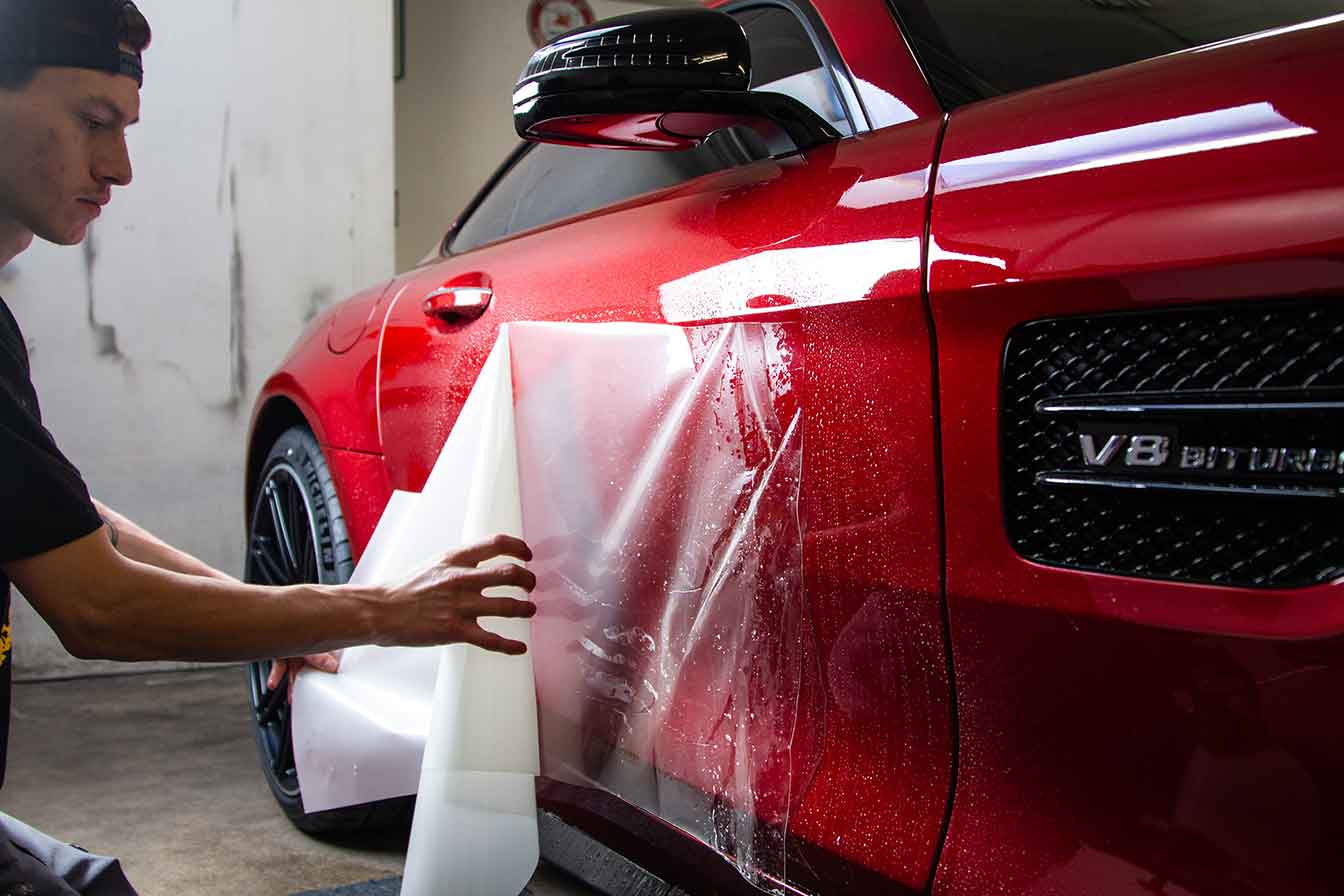Is Ceramic Coating Worth the Investment for Your Car’s Exterior?
Is Ceramic Coating Worth the Investment for Your Car’s Exterior?
Blog Article
Ceramic Coating vs. Conventional Wax: Which Offers Much Better Long-Term Protection?
The dispute in between ceramic coverings and conventional wax for vehicle security has amassed significant interest among auto enthusiasts and specialists alike. While both offer the objective of guarding paint, their distinctions in toughness, application, and long-lasting maintenance expenses might affect a consumer's option. Ceramic coatings flaunt exceptional longevity and resistance to environmental aspects, yet the complexity of their application questions concerning availability and functionality. As we discover these contrasting alternatives, it ends up being vital to think about not just the instant advantages yet also the effects for car treatment over time.
Introduction of Ceramic Finish
Ceramic finish has obtained considerable popularity amongst automobile lovers and detailers alike because of its innovative protective qualities. This innovative modern technology is developed to create a resilient, hydrophobic shield over a vehicle's paint surface area, dramatically enhancing its resistance to environmental contaminants such as dust, UV rays, and chemical spots. Unlike typical wax, which supplies a short-term layer of security, ceramic finishes bond at a molecular level with the paint, supplying lasting longevity-- typically expanding beyond 2 years with correct upkeep.
The application procedure entails meticulous prep work of the automobile's surface area, consisting of cleaning and brightening to ensure optimum attachment. As soon as applied, the covering remedies to form a robust layer that not only includes depth and gloss to the paint yet also simplifies maintenance. With its hydrophobic properties, ceramic coating enables water and dirt to move off more quickly, decreasing the frequency of washes and minimizing the danger of swirl marks.
In addition, ceramic finishes are available in various formulations, enabling individuals to pick products customized to their details requirements and preferences. In general, ceramic layer stands for a considerable advancement in paint security modern technology, delivering superior performance contrasted to traditional options.
Overview of Typical Wax
Generally considered a staple in auto treatment, wax acts as a popular choice for those looking for an uncomplicated approach to boost and shield their automobile's paint - ceramic coating. Automotive wax generally comprises all-natural ingredients, such as carnauba, or artificial compounds, created to develop a safety layer externally of the paint. This layer not just enhances the vehicle's gloss and beam but additionally supplies a barrier against ecological contaminants
The application of wax is typically user-friendly, making it easily accessible for both professionals and Do it yourself fanatics. Once used, wax needs a healing duration, after which it solidifies to create a safety shell.
However, while wax works for enhancing the aesthetic allure of a lorry, it is very important to note that the protection it uses might demand much more frequent reapplication compared to different items, such as ceramic coatings. In general, standard wax remains a favored alternative for those focusing on ease of usage and instant aesthetic enhancement.
Resilience and Durability Contrast
While both ceramic coatings and standard wax deal safety benefits for automobile paint, their resilience and longevity differ substantially. Conventional wax, generally made from all-natural carnauba or artificial polymers, normally offers a protective layer that lasts around three to six months. This reasonably brief life-span requires routine reapplication to maintain optimal defense.
In contrast, ceramic coatings are crafted from advanced nanotechnology, developing a covalent bond with the paint surface area. This results in a durable, hydrophobic layer that can endure for two to five years, depending on the item and ecological problems. The remarkable resilience of ceramic finishes is credited to their chemical framework, which uses improved resistance to scrapes, UV rays, and oxidation.

Security Against Ecological Variables
Securing an automobile's paint from environmental factors is critical for preserving its appearance and value gradually. Automobiles are continuously subjected to a variety of components, consisting of UV rays, bird droppings, tree sap, acid rainfall, and road grime, every one of which can compromise the stability of the paintwork.
Ceramic coverings supply a durable protection against these environmental assailants. Unlike typical wax, which can break down promptly under UV exposure, ceramic finishings develop a durable, hydrophobic layer that resists the dangerous impacts of sunshine and toxic wastes. This sophisticated modern technology produces a chemical bond with the lorry's surface, using superior security that lasts for years, also in extreme conditions.
Typical wax, while easier to use, commonly needs frequent reapplication and supplies minimal resistance to impurities and UV rays. With time, it can damage down, you can look here leaving the paint at risk to scrapes and oxidation. On the other hand, ceramic coatings maintain their protective qualities longer, considerably decreasing the risk of paint damage and guaranteeing that the automobile keeps its aesthetic charm. As a result, ceramic layers are significantly identified as the superior option for long-term protection against ecological elements.
Application and Maintenance Differences
The techniques of application and succeeding upkeep for ceramic finishings and standard wax vary dramatically, affecting the overall customer experience and effectiveness of each item. Ceramic coatings need an even more elaborate application procedure, typically including surface area prep work that includes washing, sanitizing, and polishing the car. As soon as the surface prepares, the ceramic layer is applied in a regulated atmosphere, usually requiring specialist competence to make sure correct treating and bonding to the paint.

While both products improve vehicle look, the longer-lasting protection supplied by ceramic finishes may warrant their initial investment, regardless of the more requiring application process. Alternatively, conventional wax remains a preferred option for those seeking an easier, albeit short-term, option.

Verdict
In final thought, ceramic coatings show substantial advantages over standard wax in regards to sturdiness and ecological protection. With a life expectancy expanding two to 5 years and remarkable resistance to UV rays, dirt, and chemical discolorations, ceramic coatings offer a much more efficient remedy for lasting vehicle maintenance. Although the Click Here application procedure might call for specialist competence, the resulting cost savings and minimized regularity of reapplication highlight the worth of ceramic finishings for those seeking click optimum automobile security.
The dispute between ceramic finishings and traditional wax for automobile security has actually amassed significant focus among automobile lovers and professionals alike. Unlike typical wax, which offers a temporary layer of defense, ceramic finishings bond at a molecular level with the paint, supplying lasting durability-- commonly prolonging past 2 years with appropriate maintenance.
While both ceramic coatings and traditional wax offer safety benefits for auto paint, their longevity and durability vary considerably. For vehicle fanatics seeking lasting protection, ceramic coverings present an engaging benefit over standard wax products.
In final thought, ceramic finishings demonstrate significant advantages over conventional wax in terms of sturdiness and ecological protection.
Report this page